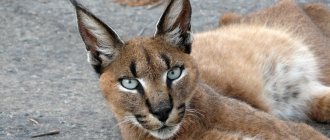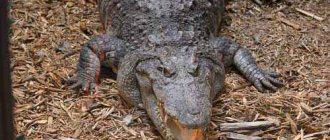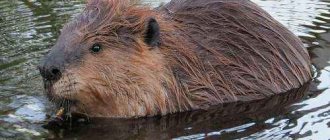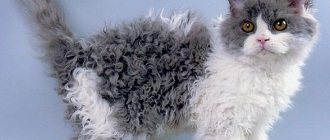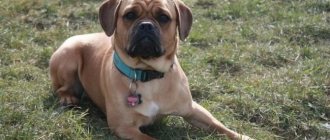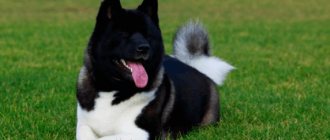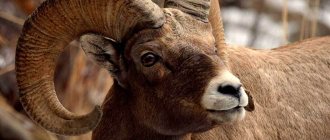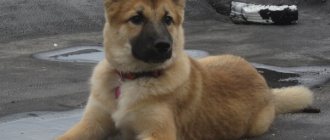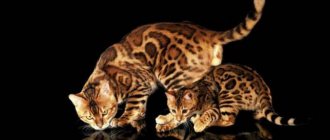Dogs (Canis lupus familiaris) are descendants of wolves and are classified as a subspecies of the gray wolf (Canis lupus). Foxes are omnivorous mammals belonging to several genera of the family Canidae. Because of their close genetic similarities, dogs and foxes share many physical traits. Tamed dogs are reliable pets and companions. Foxes are not suitable for keeping as pets. But if you like the look of foxes, you can choose a dog that looks like one. Here is a list of 10 dog breeds that resemble a fox.
Akita Inu
Often called the “silent hunter,” the Akita Inu is the largest of the Japanese Spitz breeds. This is a calm but temperamental dog that is not always easy to train. However, the Akita is known for its loyalty, because representatives of this breed have long been faithful guard and hunting dogs.
Like many fox-like dogs, the Akita requires daily exercise. Both the Japanese and American Akita are varieties of the same breed, but with different colors.
Poulin
Photo: Jozefsu/Wikimedia Commons
The Pulin is a black breed of dog, very similar to a fox, native to the Vojvodina region of Serbia. This is a loving and loyal pet, but it requires a lot of different exercises for both physical and mental health.
Didn't find what you were looking for? Use the site search form
Since childhood, we have admired the agility and grace of wild foxes. But taming this animal, and even keeping it at home, is not an easy task. It’s much easier to get a dog that looks like a furry rogue. Take a closer look at several breeds of four-legged pets presented below, evaluate the degree of similarity and make your choice.
Shiba Inu
The Shiba Inu is an affectionate breed that is devoted to its family. However, these pets may not relate well to other people or pets. This is the smallest of all Japanese breeds.
Historically bred for hunting, the Shiba Inu is a dog of Japanese origin, a member of the Spitz family. The Shiba Inu is known to be an independent and intelligent breed. These pets are quite difficult to train and may develop behavioral problems ranging from possessiveness to aggression. The Shiba Inu is considered an extremely fast dog when it comes to chasing small animals.
Independence is a sign of the breed
The dachshund is characterized by an arched chest. The front legs are slightly bent at the joint, very strong. Gardeners who have dachshunds are amazed at how quickly they tear up mouse holes.
You need to raise a dachshund from three months. Smart dogs do not immediately learn commands. They respond well to encouragement and do not tolerate rude treatment.
He is wary of strangers and takes a long time to get used to strangers.
The dachshund is smart and can adapt to any conditions. She tries to rule, she is capable of mischief - tearing something out of spite. She doesn’t like to be held, this is due to physiological characteristics - the dachshund’s spine is weak. She constantly needs to move a lot and cover long distances.
American Eskimo dog
This beautiful white dog breed is one of the most affectionate and friendly. Outwardly, it resembles Arctic foxes. It is also known that the American Eskimo dog is a protector and faithful watchman for its family members. Dogs of this breed love playing outdoors, although their luxurious, thick coat requires careful grooming.
Slugi and Saluki
Incredibly fast Arabian greyhound from North Africa. Outwardly, Slugi resembles an Azawakh: the same tall, lean, long-legged. Colors are shades of red, from light sand to reddish.
The slug's fur is so smooth, thin and short that it is almost invisible.
In Russia, purebred Slugs are rare. The only nursery operates in St. Petersburg.
Shorthaired Salukis.
Due to their external similarity and consonant names, the Slugi is sometimes confused with another Arabian greyhound, the short-haired Saluki. But DNA studies have proven that these are two separate breeds.
Schipperke
Another very active breed, the Schipperke is independent and brave, but tends to bark a lot. Originally developed in Belgium, the Schipperke breed is also known as the "little captain".
The Schipperke looks like a small black fox. This breed loves to be involved in daily activities and enjoys outdoor exercise with its family. Also keep in mind that the Schipperke loves to chase small animals.
Finnish Spitz
Photo: Karelgerda/Wikimedia Commons
The Finnish Spitz, often called the Karelian-Finnish Laika, is a very energetic and active breed that requires significant daily exercise for physical and mental development. Although the Finnish Spitz can make a loving family pet, the breed is prone to barking loudly when bored.
Norwegian Gray Elkhound
Photo: ChildofMidnight at English Wikipedia
The Norwegian Gray Elkhound is a hunting dog breed, but also belongs to the Spitz group. This is a playful dog, but at the same time it is a good guard and a loyal pet. The Norwegian Gray Elkhound needs to be socialized with people. Therefore, during prolonged separation and loneliness, the dog may develop behavioral problems. Despite their small stature, the Norwegian Gray Elkhound is an extremely energetic breed that requires daily exercise.
Varieties
Fox-like dogs come in different sizes: large, medium and small. All of them have both common characteristics and purely individual ones.
Collie
Long-haired collies reach a height of 60 cm and a weight of 30 kg. With such parameters, they are distinguished by grace and harmonious physique. In the past, animals were used as shepherds or working dogs, but now they are considered decorative.
The resemblance to a fox is enhanced by its elongated head, almond-shaped eyes, as well as a fluffy collar and tail. Thanks to the dense undercoat, the collie's coat is thick, the color is mainly sable, with shades of yellow, red and light golden tones.
They also resemble a cunning fox in their intelligence. Scottish Shepherds are unpretentious in care, but they are distinguished by their endurance and calm character.
They treat children with special attention and affection, being amazing nannies.
Samoyed
One of the most ancient breeds that lives in the north. Representatives of the breed served as sled dogs, as well as hunting and guard dogs. They can weigh up to 25 kg, and the height of an adult dog is up to 57 cm. The Samoyed is characterized by its great similarity to a white fox, not only by its strong, somewhat elongated build and coat color. They have a similar head shape - a wedge-shaped, slightly elongated muzzle, small triangular erect ears and slightly slanted eyes.
In addition, they are similar in the structure of their coat; in both animals it is two-layered, with a dense white or cream collar. Although the Samoyed's character is quite stubborn and independent, it can be easily corrected with proper upbringing and attention from the owner.
The breed is not at all characterized by aggression; they are extremely friendly and patient with children.
Norwegian Elkhound
It belongs to ancient hunting breeds and is characterized by its similarity to the silver fox. The dog's ears are triangular, straight, and its fur shimmers in shiny black and gray shades. Despite its endurance and northern temperament, the Elkhound has a gentle character. He is distinguished by his friendliness, intelligence and good attitude towards children . The negative aspects of the breed include excessive independence and the desire to dominate, as well as aggression towards other animals.
Representatives of this breed require training and socialization, otherwise they will become uncontrollable.
Shiba Inu
A Japanese hunting breed that was used for catching small game. Today, the dog has turned into a friendly companion and family pet, having lost its original purpose. Shiba Inus belong to medium-sized breeds; they can reach a height of 41 cm and weigh up to 12 kg. The dogs are playful and energetic, but unpretentious in their maintenance. By its nature, the animal is quite self-confident, and this feature can become a problem for an inexperienced or too soft owner.
To get obedience and respect from a dog, you need to give it a lot of time and attention.
Keeshond
The dog belongs to the Spitz variety. Previously, she was kept as a guard, but now she is acquired as a companion. The maximum height of the animal reaches 45 cm. According to external data, the Keeshond resembles a silver fox. The head is wedge-shaped with a slightly elongated, rectangular muzzle.
The dogs are quite independent, but very peaceful. They get along well with other animals, particularly cats, and adore children. The breed is easy to train because it has high intelligence and curiosity.
American Eskimo Spitz
Its appearance is very similar to a white fox. The fluffy coat, pointed muzzle and sly look give a great resemblance. Dogs come in three varieties depending on their height: standard, miniature and toy. Representatives of the breed are distinguished by their well-developed intelligence, attentiveness and active disposition. In addition, they are very loyal and excellent guards.
The dog needs physical activity, and also needs to devote quite a lot of time to it.
Sheltie or Shetland Sheepdog
It is characterized by medium size, the Sheltie's height is on average 35-40 cm, and its weight is about 10-12 kg. In addition to its characteristic resemblance to a fox, it also has thick fluff, the color of which can vary from sable to a combination of brownish, red and white.
The sly look of slanted eyes also gives the dog a resemblance to a fox. The Sheltie is distinguished by excellent health, well-developed intelligence and high performance. In the past they were shepherds, but now they are exclusively decorative dogs, they are friendly and sociable.
Their character is calm and peaceful; their graceful posture gives the Sheltie a certain aristocracy.
Schipperke
A small shepherd that resembles a black fox. The breed combines the characteristics of a Spitz and a fox. The average height of a dog is about 30 cm, and its weight reaches 7 kg. The animals are very active and inquisitive, with a calm character. Dogs can spend a lot of time with children; they love to play and indulge.
Finnish Spitz
Very reminiscent of a fox, even has a similar look. In addition to golden-red fur, it can have a dark gray, black or brown color, as well as fawn and black. The breed belongs to the hunting breed and was used for baiting both birds and much larger animals such as wild boar or bear. It can reach 50 cm in height.
Due to his independent and independent nature, he needs a strict owner, as well as intense physical activity.
Pomeranian Spitz
A representative of this breed only acquires the features of a fox with age. The color of dogs can be different: from red and golden-red to blue and black. They weigh on average up to 3 kg with a height of about 20 cm. The dogs are distinguished by their intelligence and activity. Self-confidence and courage often leads to fights with other dogs, even if they are significantly larger in size.
The Spitz needs daily active walks and regular training.
Welsh Corgi
A breed of small dogs with short legs and large ears. Adults can reach 25-30 cm in height and weigh up to 12 kg. Corgis are characterized by a good disposition and a reverent attitude towards their owner.
Despite their squat paws, dogs love energetic games and long walks. Their balanced nature makes them wonderful companions.
Pomsky
A hybrid of a Pomeranian Spitz and a Husky, the breed is quite young, not yet very popular and little studied. Depending on the characteristics of the parents, they can have different colors and parameters. Dogs are energetic and inquisitive. They love active games and walks. Their character is non-aggressive, but they love to bark. Of all the members of the household, the Pomsky will choose his favorite and will obey only him.
Alaskan Klee Kai
The Alaskan Klee Kai breed originated in the 1970s as a smaller version of the Husky. This intelligent, playful and extremely energetic dog makes a wonderful and loyal pet. The Alaskan Klee Kai loves its family members, but will be more wary of strangers. Although these dogs can be found in a variety of colors, the rare red and white Alaskan Klee Kai bears a striking resemblance to the red fox.
Rules of care
Keeping fox-like dogs does not require much effort or expense. Their dense “coat” repels water and dirt. Animals are also characterized by cleanliness; they themselves are able to maintain the cleanliness of their fur, and in addition, they try not to get dirty. Grooming involves brushing with a stiff brush, the frequency depending on the length of the coat. For breeds with shorter hair, once a week is enough, while dogs with long hair should be brushed approximately once every 2-3 days.
If tangles have formed in the wool, they need to be carefully combed out. During shedding, the procedure should be carried out more often, since the densely pubescent undercoat sheds quite heavily, ideally once a week. Dogs are bathed rarely or when they are heavily soiled, using special shampoos. It is better to leave your dog's haircut to a professional. In terms of hygiene, you need to trim the hair between the toe pads and in the lower area of the tail.
Dogs' ears, eyes and teeth should be examined regularly: the ears are cleaned with a damp swab as they become dirty, and special toothbrushes and pastes are used to clean the teeth about 3-4 times a week. The animal's paws must be examined after each walk to avoid damage. Nails are trimmed approximately once a month.
Thick fur provides a good habitat for parasites, especially ticks. After each return from a walk, the coat is inspected for their presence. It is necessary to undergo regular veterinary examinations, vaccinations and anthelmintic prophylaxis.
In the past, almost all fox-like dogs were shepherds or hunters, so they love active pastime, long walks and physical activity. Due to their waywardness and too independent nature, animals simply need training and socialization. The classes will not be too difficult, since dogs are very smart and have a fairly developed intellect, but their stubbornness can become an obstacle.
Here you need to find the right approach to your pet. Such dogs need a confident owner with a strong character who can show his leadership. Otherwise, the animal will take on this role, and it will be impossible to control it.
What dog breeds are similar to foxes - list, characteristics and photos
Photo: Taro the Shiba Inu/flickr
Dogs (Canis lupus familiaris) are descendants of wolves and are classified as a subspecies of the gray wolf (Canis lupus). Foxes are omnivorous mammals belonging to several genera of the family Canidae. Because of their close genetic similarities, dogs and foxes share many physical traits. Tamed dogs are reliable pets and companions. Foxes are not suitable for keeping as pets. But if you like the look of foxes, you can choose a dog that looks like one. Here is a list of 10 dog breeds that resemble a fox.
Corsican legends
For centuries, Corsican shepherds have told stories of strange animals that attack cows and sheep. These animals tried to attack the udders of livestock. There have also been attacks on chicken coops.
The unusual animal looked like both a cat and a fox. Legends about this animal have been passed down from generation to generation. The locals called it ghjattu volpe, which means “cat-fox” or “cat fox” in Corsican.
For a long time, scientists considered these myths to be fiction. It was assumed that Corsican peasants mistook ordinary cats for a new species of animal.
However, the fox cat does exist. In 2008, this animal was caught in a chicken coop in northern Corsica. The new species of mammal leads a predominantly nocturnal and secretive lifestyle. The cat-fox lives in remote and deserted places. That is why for many centuries it was impossible to catch it.
The foreman from “Parenthood” is married to a handsome man: photo
The Golden Monster and the Pterodactyl Phantom: 10 Strangest Scooby-Doo Villains
Taking care of your health and appearance: how a person can gain confidence
Species of foxes of the genus Vulpes
The fox genus Vulpes is the largest and most widespread among canids, numbering 12 species of foxes. Representatives of this genus can be found in the far north, South America, Europe, Africa, and Asia.
The characteristic features of foxes of the genus Vulpes are a pointed muzzle, triangular erect ears, a long and fluffy tail, and a flat skull compared to the genus Canis. The color of the tip of the tail is usually different from the main color. There are black triangular markings on the muzzle between the eyes and nose.
Red fox Vulpes vulpes
Currently, there are about 48 subspecies of the common fox, which are distributed from the Arctic Circle to the deserts of Asia and North Africa and Central America. They were also introduced to Australia. This is such a common species that it is most likely the most flexible of all carnivores.
Body length is on average 75 cm, tail – 40-69 cm, weight can reach 10 kg. The coat is rusty to fiery red above, and white to black below. The tip of the tail is often white. There are silver and other color varieties.
Bengal (Indian) fox Vulpes bengalensis
Inhabits India, Pakistan, Nepal. It lives in steppes, open forests, thorny bushes and semi-deserts up to 1350 m above sea level.
Body length – 45-60 cm, tail – 25-35 cm, weight – 1.8-3.2 kg. The color of the short, smooth coat is sandy-red, the paws are reddish-brown, and the tip of the tail is black.
South African fox Vulpes chama
Distributed in Africa south of Zimbabwe and Angola. You can meet it in the steppes and rocky deserts.
Body length - 45-60 cm, tail - 30-40 cm, weight - 3.5-4.5 kg. The color is reddish-brown agouti with a silver-gray back, the tip of the tail is black, there is no dark facial mask.
Corsac Vulpes corsac
It is found in the steppe zone of the southeastern part of Russia, in Central Asia, Mongolia, in Transbaikalia to the north of Manchuria and the north of Afghanistan.
Externally, the corsac is similar to an ordinary fox, but much smaller. Body length 50-60 cm, tail – 22-35 cm, weight – 2.5-4 kg. The coat color is brownish-gray, the chin is white or slightly yellowish. A characteristic feature of the corsac are wide, noticeably prominent cheekbones.
Tibetan fox Vulpes ferrilata
Inhabits the steppe areas of the highlands (4500-4800 m above sea level) of Tibet and Nepal.
Body length – 60-67 cm, tail – 28-32 cm, weight – 4-5.5 kg. The body and ears are colored light gray agouti, the tip of the tail is white. The long and narrow head appears square due to the thick and dense collar. The fangs are elongated.
African fox Vulpes pallida
Inhabits North Africa from the Red Sea to the Atlantic, from Senegal to Sudan and Somalia. Lives in deserts.
Body length – 40-45 cm, tail – 27-30 cm, weight – 2.5-2.7 kg. The coat is short and thin. The body and ears are yellowish-brown, the paws are red, and the tip of the tail is black. There are no markings on the face.
Sand fox Vulpes rueppellii
Found from Morocco to Afghanistan, northern Cameroon, northeastern Nigeria, Chad, Congo, Somalia, Egypt, Sudan. Inhabits deserts.
Body length – 40-52 cm, tail – 25-35 cm, weight – 1.7-2 kg. The coat is pale sandy in color, the tip of the tail is white, and there are black spots on the muzzle. It has large ears that help regulate body temperature, and the fur on its paw pads makes it easier to move across hot sand.
American Corsac Vulpes velox
Found from Texas to South Dakota. From 1900 to 1970 this species was found in the northern Great Plains, in Canada, but, apparently, the American corsac was completely exterminated: in 1928 the fox disappeared from the province of Saskatchewan, and in 1938 from the province of Alberta. However, it has now been successfully reintroduced to the Canadian prairie.
Body length – 37-53 cm, tail – 22-35 cm, weight – 2-3 kg. The coat is pale gray in winter, red in summer; the tip of the tail is black, and there are black spots on the sides of the muzzle.
American fox Vulpes macrotis
Inhabits northwestern Mexico and southwestern United States. Lives in prairies and arid steppes.
Body length – 38-50 cm, tail – 22-30 cm, weight – 1.8-3 kg. The coat is yellow-red in color, the limbs are reddish-brown. The tail has a black tip and is very fluffy.
Afghan fox Vulpes cana
Inhabits Afghanistan, northeast Iran, Balochistan; an isolated population is known in Israel. You can meet it in mountainous regions.
Body length – 42-48 cm, tail – 30-35 cm, weight – 1.5-3 kg. The color is most often uniform dark, in winter it is brownish-gray. Bare paw pads are adapted for life in areas with steep slopes.
Fennec fox Vulpes zerda
It is sometimes placed in the genus Fennecus due to its large ears, rounded skull and small teeth. It lives in North Africa, across the entire Sahara east to Sinai and Arabia. Lives in sandy deserts.
Body length – 24-41 cm, tail – 18-31 cm, weight – 0.9-1.5 kg. Fennec fox is the smallest of all foxes. The coat color is cream, the tip of the tail is black. The paw pads are pubescent. A notable feature of the fennec cat is its huge ears, which make up 20% of the body surface, helping the animal cool down in the heat of the day (at high air temperatures, the vessels in the ears expand, increasing heat transfer). However, at temperatures below 20° C, the fennec begins to shiver from the cold.
Arctic fox (arctic fox) Vulpes (Alopex) lagopus
Modern scientific classification sometimes classifies the only genus of arctic foxes as a genus of foxes. The Arctic fox inhabits the subpolar zone; tundra and littoral areas of the sea coast.
Body length – 53-55 cm, tail – 30-32 cm, weight – 3.1-3.8 kg. There are two types of color: "white", which looks like taupe in summer, and "blue", which looks chocolate brown in summer. The fur is very dense, at least 70% is warm undercoat. Arctic foxes have amazing resistance to cold.
Choosing a puppy
When deciding to choose a Fox Spitz puppy, you should focus on the baby’s activity. If he runs, plays, eats well and goes to the toilet regularly, he is a healthy puppy.
Problems with the “fluffy”’s well-being affect his behavior:
- he whines;
- sits in the corner, showing no interest in anything;
- gets scared, breaks out of hands, is aggressive, tries to bite;
- backs away, hiding behind his mother.
A healthy animal should run up to a person, sniff him, satisfying his curiosity. Before purchasing a future pet, you should carefully examine it. Signs of a healthy dog:
- The puppy's gait is smooth and its running is springy.
- Confident stance with a straight back.
- Signature curled ponytail, raised up.
- The wool is odorless, fluffy and clean.
- The skin is free of wounds, inflammations and rashes.
- The ears are clean, without mites or discharge.
- The puppy's belly is soft and not swollen or sunken.
- The eyes are radiant without purulent discharge.
- A well-developing dog has at least 12 teeth.
At 4–5 months the first molt will begin, only then can you clearly say what color the orange will have. The structure of the coat and its color will only be fully formed by the age of one year.
Chihuahua
Many Chihuahuas, especially those with long fur, bear a striking resemblance to the tiny fennec fox. These dogs tend to have close bonds with their loved ones, but can be unfriendly with other people and animals. Despite their small size, they need a lot of mental and physical exercise to keep them happy.
Genus Dusicyon (South American foxes)
The habitat of foxes of the genus Dusicyon is limited to South America. The color is usually gray with reddish-brown splashes. The skull is long and narrow; The ears are large, the tail is fluffy.
Andean fox Dusicyon (Pseudalopex) culpaeus
It lives in the Andes, from Ecuador and Peru to the island of Tierra del Fuego. Found in the mountains and pampas.
Depending on the subspecies, body length varies from 60 to 115 cm, tail length - 30-45 cm, weight - 4.5-11 kg. The back and shoulders are gray, the head, neck, ears and paws are reddish-brown; the tip of the tail is black.
South American fox Dusicyon (Pseudalopex) griseus
It lives in the Andes, the population is mainly concentrated in Argentina and Chile. Lives at lower altitudes than the Andean fox.
Body length – 42-68 cm, tail – 31-36 cm, weight – 4.4 kg. The color is mottled light gray; the lower parts of the body are lighter.
Paraguayan fox Dusicyon (Pseudalopex) gymnocercus
Inhabits the pampas of Paraguay, Chile, southeastern Brazil, from southern through eastern Argentina to Rio Negro.
Body length – 62-65 cm, tail – 34-36 cm, weight – 4.8-6.5 kg.
Securan fox Dusicyon (Pseudalopex) sechurae
It lives in the coastal deserts of northern Peru and southern Ecuador.
Body length – 53-59 cm, tail – about 25 cm, weight – 4.5-4.7 kg. The coat is light gray, the tip of the tail is black.
Brazilian fox Dusicyon (Pseudalopex) vetulus
Inhabits southern and central Brazil.
Body length is about 60 cm, tail is about 30 cm, weight is 2.7-4 kg. The muzzle is short, the teeth are small. The coat color of the upper body is gray, the belly is white. There is a dark line on the dorsal surface of the tail.
Darwin's fox Dusicyon (Pseudalopex) fulvipes
Found on the island of Chiloe and in Nahuelbuta National Park, Chile.
Body length is about 60 cm, tail is 26 cm, weight is about 2 kg. The coat of the upper body is dark gray, the neck and belly are the color of cream. The species is endangered.
While traveling by ship in 1831, Charles Darwin acquired a specimen of the gray fox, which later received his name. In his journal, he recorded that on the island of Chiloe a fox was caught, belonging to a genus which appears to be unique to the island and very rare on it, and has not yet been described as a species. Although Darwin suspected the uniqueness of this fox, which was recently confirmed, the status of this animal remained unclear for a long time. It is distinguished by a dark brown, almost rusty head color and relatively short legs.
Maikong Dusicyon (Cerdocyon) thous
Distributed from Colombia and Venezuela to northern Argentina and Paraguay. Inhabits savannas and forests.
Body length - 60-70 cm, tail - 28-30 cm, weight -5-8 kg.
The coat is gray-brown, the ears are dark; tail with dark dorsal strap and white tip; paw pads are large; the muzzle is short.
Short-eared fox (lesser fox or short-eared zorro) Dusicyon (Atelocynus) Microtis
It lives in the tropical forests of the Orinoco and Amazon river basins. Found in Peru, Colombia, Ecuador, Venezuela and Brazil.
Body length -72-100 cm, tail - 25-35 cm, weight up to 9 kg. The color is dark, the ears are short and rounded. The teeth are long and strong. Cat's gait.
Literature: Mammals: Complete illustrated encyclopedia /Translated from English/ Book. I. Carnivores, marine mammals, primates, tupayas, woolly wings. / Ed. D. MacDonald. – M: “Omega”, – 2007.
